I have a scrollview who's content expands to fill the screen and stacks in front using the zIndex. The expanded content also has a scrollview for the content inside. I'm literally trying to mimic the Apps Stores "Today" tab with expanding cards and scrollable content inside. The way I built this though I realized the expanding view is still part of the parent scrollview. As a result the scrollviews are nested and conflict. This was not what I intended.
Im very new to programming. This is the code that basically expands each card. Its pretty basic. A ternary expands the cards. The CardView is the cards content. Attached is a screenshot of what I'm trying to achieve. Need help here. Any info would be great. Been searching the internet for a way to do this right.
struct Media: View {
@EnvironmentObject var vm : ViewModel
@Environment(\.colorScheme) var mode
@State var showCard = false
@State var activeCard = -1
let height = UIScreen.main.bounds.height
var body: some View {
ZStack {
ScrollView (.vertical, showsIndicators: false) {
VStack (alignment:.center, spacing: 30) {
ForEach (vm.cards.indices, id: \.self) { i in
let z=vm.cards[i].z
GeometryReader { geom in
ZStack {
CardView (showCard: $showCard,
activeCard: self.$activeCard,
zValue: $vm.cards[i].z,
i: i,
cards: vm.cards[i])
}//Z
.frame(minHeight: showCard && activeCard == i ? height : nil) //Animates Card Scaling
.padding(.horizontal, showCard && activeCard == i ? 0:20) // Card Padding
.offset(y: i==activeCard ? -geom.frame(in: .global).minY : 0)
} //GEOM
.frame(minHeight: 450)
.zIndex(z)
} //LOOP
} //V
.padding([.bottom, .top])
} //SCROLLVIEW
} //Z
.background(Color("Background Gray"))
}

